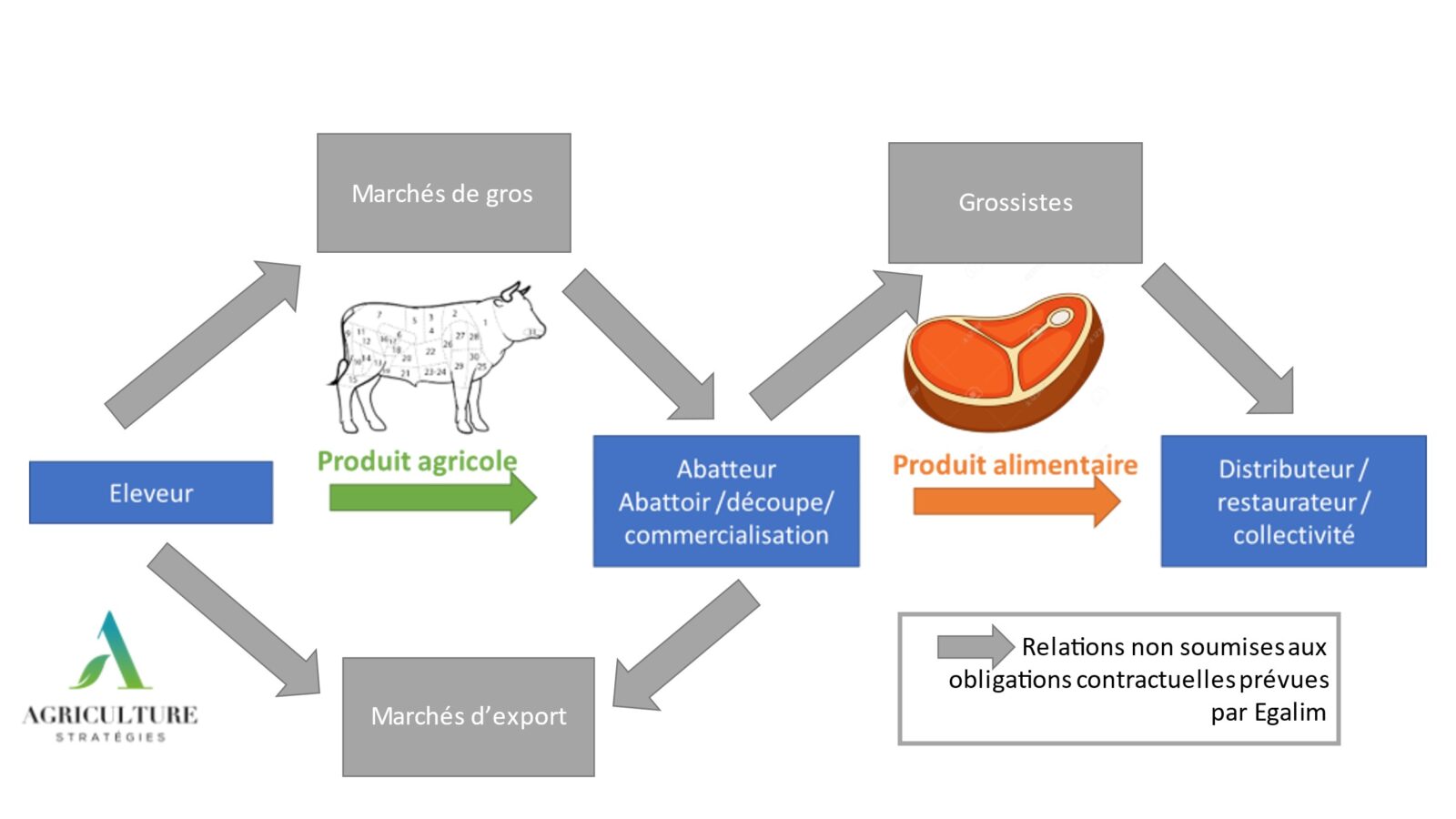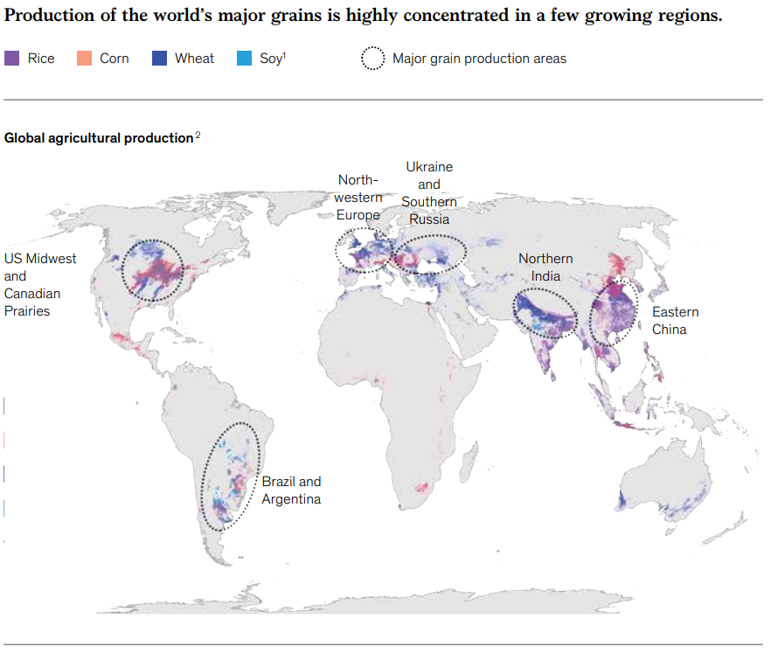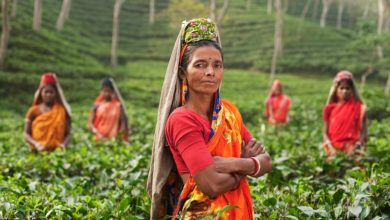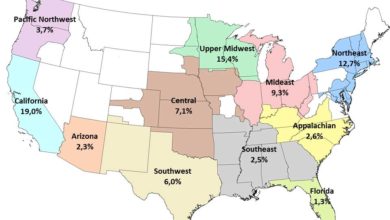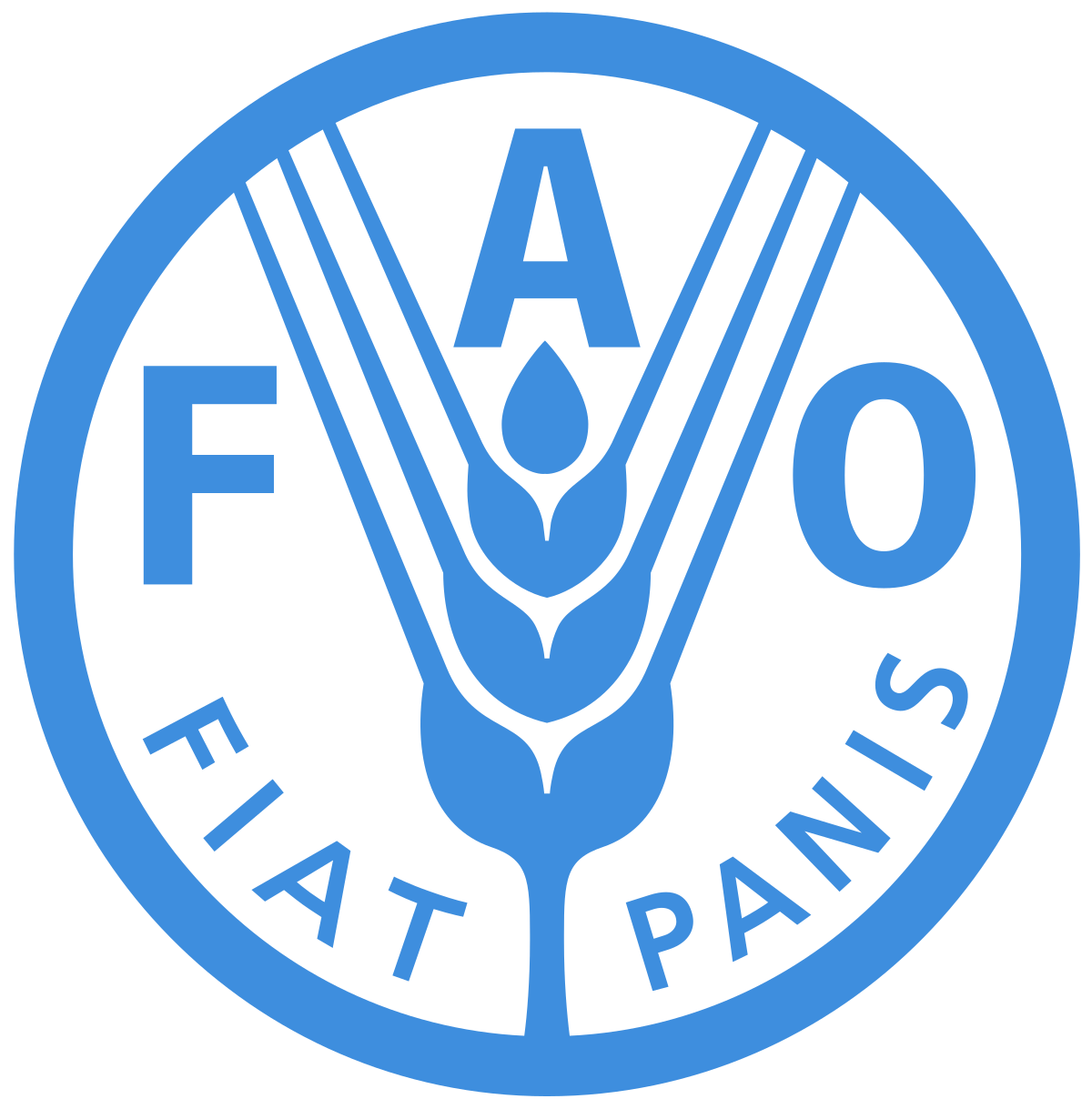
Basé sur 9 études de cas réparties sur 5 continents, ce rapport propose une vision d’ensemble des IG comme modèle vertueux d’organisation des producteurs. En effet, l’atout clé des IG réside dans « la capacité des producteurs, à travers leur organisation collective, à modifier la structure de marché et à peser davantage sur la formation du prix, soit grâce à un contrôle de l’offre […] soit à travers un accord avec l’ensemble de la chaîne de valeur permettant d’établir des prix minimums pour les producteurs ».
Face à des marchés de matières premières chaotiques, les IG permettent une « décommoditisation » et améliorent « l’efficience des marchés en limitant la concurrence déloyale et les stratégies de passagers clandestins tout en réduisant les asymétries d’information pour les consommateurs grâce à des logos officiels et des campagnes publics ». Les effets positifs des IG sur la diffusion de l’innovation et l’amélioration de la qualité des produits sont également mis en avant.
Parmi les cas étudiés dans ce rapport, on retient en particulier l’exemple du poivre blanc du Penja au Cameroun où un prix minimum annuel est défini par concertation de l’ensemble des acteurs de la filière, ainsi que celui du safran de Taliouine au Maroc, où des soutiens publics est conditionnée à la participation à une coopérative de producteurs.
Si la notion d’« empowerment » des producteurs, chère à l’économiste Amartya Sen, est, à juste titre, largement mise en avant, on s’attendait à voir quelques références à d’autres cadres théoriques pertinents pour comprendre l’émergence et le maintien de telles stratégies collectives ; on pense notamment à la gestion des biens communs d’Elinor Olstrom voire aux patrimoines productifs collectifs popularisés en France notamment par Barrère, Barthelemy et Nieddu.
Enfin, si la promotion des IG est au cœur de l’histoire du développement de l’agriculture européenne, espérons que la reprise de ce concept sur les autres continents pourra donner quelques bonnes idées aux législateurs communautaires. Après avoir attendu « le paquet Lait » de 2010 pour officialiser la possibilité donnée aux fromages sous appellation d’avoir un programme de maîtrise de l’offre, il est grand temps maintenant que la législation communautaire étende explicitement cette opportunité, à minima, à l’ensemble des productions sous IG.
Frédéric Courleux, Directeur des études d’Agriculture Stratégies
What is this study about?
Geographical indications (GIs) refer to products with specific characteristics, qualities or reputations resulting from their geographical origin. This differentiates products based on unique local features, history or distinctive characteristics linked to natural and human factors, such as soil, climate, local know-how, and traditions. GIs are recognized as intellectual property rights (IPRs) and therefore offer both a helpful
marketing tool and protection of the name. Following the Food and Agriculture Organization of the United Nations (FAO) methodology of the virtuous circle of origin-linked quality,1 GIs can be used to support sustainable development and sustainable food systems. If they fulfil their potential to promote economic development and food security, they can even provide a promising territorial approach to achievement of the Sustainable Development Goals (SDGs). In this view, ensuring economic viability is a key factor, but empirical evidence of the benefits of GIs is sparse, especially in countries where GI procedures are recent.
This study seeks to provide empirical evidence on the economic impacts that are generated through the GI process, beginning with the official recognition of a GI and the steps that follow. It focuses on the food sector and reviews nine cases, offering a variety of national contexts and local value chains. The approach considers “operational” GI processes: those in which a code of practice (or specifications) is defined and the GI is used and managed by a collective organization. The cases are: Colombian coffee, Darjeeling tea (India), Futog cabbage (Serbia), Kona coffee (United States), Manchego cheese (Spain), Penja pepper (Cameroon), Taliouine saffron (Morocco), Tête de Moine cheese (Switzerland) and Vale dos Vinhedos wine (Brazil). A specific methodological framework (detailed in the annex) has been developed based on qualitative and quantitative analysis of each case thanks to field work carried out by Masters and PhD students, so as to identify the economic impacts of GI processes and define the mechanisms involved.
Evidence on the economic impacts of GIs
Major impact of GIs on the price of final products
This study confirms a significant positive effect of GIs on price, regardless of the type of product, the region of origin, and whether the GI is long-established or recently registered. Indeed, the registration of GIs substantially increases the price of the final product in all the nine cases studied. The premium or added value varies considerably depending on the case – and also, for a single product, depending on the market. It ranges from 4 percent (Tête de Moine cheese on the domestic market, although it is 57 percent on the export market) to more than 120 percent (Penja pepper), to even more in the case of Taliouine saffron for producers who join a cooperative (500 percent). In most cases, the premium is between 20 and 50 percent.
This analysis shows that there are various mechanisms supporting the positive effect of the GI process on price:
- the ability of GIs to reduce asymmetrical information between producers and consumers by providing information about the link to origin, and consequently to increase consumers’ willingness to pay higher prices;
- producers’ ability, through their collective organization, to modify the organization of the market and intervene on the determination of price, either by controlling supply (creating a higher demand and increased price) or through an agreement among the value chain stakeholders to pay a minimum price to producers, as is clearly illustrated by Colombian coffee, Penja pepper and the two cheeses.
Better distribution to primary producers
The positive impact of GIs on value redistribution to upstream segments is observed in the two processed products (Manchego and Tête de Moine cheeses) and Colombian coffee. For the latter, the share of the price transmitted to producers by the National Coffee Federation increases by 25 percent with the registration of the protected geographical indication (PGI). The registration of the two cheeses has an effect on the milk price paid to breeders: milk purchased for Manchego cheese sees a 5.5 percent added value compared with non-GI milk, whereas in the context of a general fall in milk prices, the decrease is less for Tête de Moine milk than for milk for the substitute product. More systematic analyses are needed to confirm this positive result in other cases so that it can be generalized.
Positive influence on production, especially in the long term
In all the cases studied except for Darjeeling tea, the GI process affects production, although the effect is different in the short and long terms. “Mature” GIs, where long-term impacts can be observed, show that promoting a GI increases production over time. This is particularly clear for Kona coffee, which sees a 250 percent increase between 1995 and 2015, and 36 percent more producers between 1991 and 2012; Manchego cheese with an 83 percent increase in volume between 2001 and 2013; and Tête de Moine cheese with a 300 percent increase in volume between 1986 and 2014. In the short term (immediately following registration), GIs can, however, provoke an initial decrease as a result of specifications that directly affect production (e.g. through more restrictive requirements or the delimitation of the production area). This is the case for Vale dos Vinhedos wine, with a reduction of 78 percent in production between 2012 and 2014, following the protected designation of origin (PDO) registration that has strongly modified some practices. Such a fall in production may be attributable to a smaller number of producers using the GI name as a consequence of its protection. This also occurs with Futog cabbage, where the amount produced under the GI falls by 76 percent between 2010 and 2014 once the use of the name becomes specified and regulated. In some cases, however, the GI can result in an immediate increase in production, as occurs with Penja pepper (+328 percent between 2010 and 2015) as a consequence of specifications that allow for greater productivity.
Enhanced market access
An increase in market access is observed in five cases (Darjeeling tea, Kona coffee, Manchego cheese, Taliouine saffron and Tête de Moine cheese), with a positive effect on both the number of destinations (extensive effect) and the value exported (intensive effect). For instance, the number of destinations of Darjeeling tea rises from 35 countries in 2004 to 45 countries in 2015. The impacts of the GI on Manchego cheese are mainly explained by an increase in the export market share, from 50 percent in 2001 to 55 percent in 2013, with access to such new markets as the United States and Germany. In other cases, the GI allows consolidation of the position of the product on pre-existing markets (the “origin pepper” market in the case of Penja pepper).
Interesting preliminary findings regarding economic resilience
Preliminary findings regarding resilience2 (observed in the six cases where data is available) reveal that GIs can be useful tools in building resilient value chains, especially by boosting the diversification of markets. Another way in which GIs can promote greater resilience is through “decommoditization”, allowing products to avoid the effects of price volatility on commodity markets, as can be seen with Kona coffee, which targets niche markets, and Penja pepper, where primary producers are protected from price volatility thanks to a minimum price negotiated among value chain stakeholders within the GI association. The case of Tête de Moine cheese demonstrates the ability of the GI to withstand the effects of a shock, since the price of its milk was less affected than other milk by the fall in price following market liberalization in Switzerland in 2001.
Interesting preliminary findings regarding positive externalities for the territory
Through a domino effect, GIs can have a substantial positive impact on other sectors of the economy. Various types of externality from the GI process can thus be observed across the cases:
- Increase in the price of a substitute product, as is seen in the example of Futog cabbage, where the price of the substitute Bravo cabbage significantly increases with the GI registration (from RSD 8.62 to RSD 11.83 per kilogram on average); similarly, all the wines produced in the valley where Vale dos Vinhedos wines are produced benefit from the reputation of the name.
- Diffusion of innovative practices to non-GI producers, as is seen in the cases of Penja pepper and Vale dos Vinhedos wine, where the GI process allows for the development of the industry for non-GI producers. For instance, the number of producers in the Penja pepper area increases by 728 percent, as do the numbers in neighbouring districts (by 746 percent in Bouba, 800 percent in Loum Gare, etc.). It should be noted that in this latter case, the boom in pepper prices on the international and domestic markets also explain this increase.
- The ability of the GI process to act as a trailblazer for the development of other GIs, as is seen in the case of Colombia, where many other GI processes have been initiated since registration of the coffee GI in 2004. As a result, there are currently 23 GI products, 11 of which are non-agricultural items; a similar phenomenon is also observed after registration of the Vale dos Vinhedos wine GI in Brazil.
Key success factors
Specific quality for differentiation and adding value
The specific qualities that origin can provide emerge clearly as a pathway to positive economic impacts. This correlation between the quality defined in the specifications and economic impacts is based on various mechanisms:
- Relation between the specific and exclusive quality and consumers’ willingness to pay: the positive effect of GIs on prices is at least partially due to the quality effect that allows consumers to identify a comparative advantage of purchasing the product. The quality must therefore be specific, exclusive, or greater; in other words, it cannot be substituted. This is illustrated in the case of Futog cabbage, where its organoleptic characteristics (taste, tenderness) are different from those of the substitute.
- Innovations boosting competitiveness: the specifications often introduce innovative practices that confer an advantage. Two categories of innovation can be observed: either (i) to meet market requirements or consumer demand as occurs for Tête de Moine cheese (with the introduction of a special cutting instrument to produce rosettes of cheese), or (ii) to modify some practice to increase productivity, as is the case for Penja pepper, which adopts more modern production techniques.
- Recognition of the role of primary producers in the specifications: upstream redistribution of added value as far as the primary producers is not automatic (for example, Futog cabbage has a monopoly at the processing level, with added value concentrated there). The specifications represent a crucial tool in ensuring a pay-back effect for farmers and producers by outlining their roles in providing the unique natural and human resources; they thus can bind the GI value chain to primary producers, who therefore have a say in negotiating price and more generally in managing the GI.
- Description of production practices in addition to the characteristics of the final product so as to ensure that the specific quality is maintained in the long term. Last, the way the specific quality is defined in the code of practice or specifications depends on the type of product and the producers’ strategy. A defensive strategy primarily defends a strong existing reputation against unfair competition, and the specifications will essentially reiterate existing practices. This differs from an offensive strategy, which seeks to establish the reputation of the GI product more solidly, and the specifications may be more innovative to adapt production to market demand.
Organized collective action
The collective nature of the GI process strengthens collective action in the whole area by bringing different stakeholders together, as is seen in all the cases. A well-functioning GI organization can play an important role in the success of the GI process by ensuring value chain and stakeholder coordination and thus boosting the bargaining power of a group of actors (although this is not always the case), by allowing economies of scale in the supply of services or goods (in production, promotion or certification), and by increasing transparency on the market. Penja pepper, with its inter-professional association, is an interesting example of the capacity of private stakeholders from different stages in the value chain to agree on a minimum price for producers, which is of vital importance for small-scale producers. Kona coffee producers, on the other hand, have no agreement regarding the rules for using the GI – and this puts the reputation at risk in the long term. Another important aspect to be considered is the time needed for stakeholders to build capacities and trust, leading to the necessary local combination of cooperation and competition (“coopetition”). The relatively older cases in Europe, such as Manchego and Tête de Moine, illustrate the increasing capacity of the governance structure to adapt to market requirements and adjust strategy according to production needs; while more recent GI processes, such as that for Taliouine saffron, which may be highly supported by public or project funds, need to build trust among stakeholders.
Effective marketing strategies
Three main strategies have been identified as key success factors through our cases.
- First, GI branding: many cases show that the capacity to build agreements with downstream actors is an essential element in achieving economic impacts. As seen with Colombian coffee, branding strengthens the visibility of the GI product and promotes the correct use of its registered name at the point of sale.
- Second, the targeting of niche markets: our cases also show that the marketing strategy is driven by the kind of GI approach (offensive or defensive) and marketing channel (niche or mass). The best economic impacts are seen when the GI organization adopts a strategy of managing the volume of supply, as in the European examples, so that prices are not driven down by significant increases in volume, with production thus exceeding demand.
- Third, gaining access to new markets in times of change: developing or conquering new (niche) export markets can help avoid the effects of a nationallevel crisis. This occurred with Manchego cheese, which escaped the full impact of a domestic economic crisis by expanding exports to the United States.
Sound legal and institutional system
Thanks to the enforcement of related legal provisions, GI processes improve market efficiency by limiting unfair competition and free-riding and by reducing asymmetrical information to consumers through official logos and public campaigns. This is illustrated in countries where the legal and institutional frameworks for GIs have been established for a longer time and have allowed stakeholders to learn collectively, which in turn enables them to work smoothly. This is seen in the European examples as well as those of Colombian coffee, Darjeeling tea, and Futog cabbage. In places where the legal and institutional frameworks are more recent, the main difficulties arise when it comes to GI certification, since the legal framework for certification is often not defined in the legislation, as is seen with Penja pepper and Vale dos Vinhedos wine. Another important function of public players is the provision of support to GI development in order to enhance its contribution to positive public externalities.
Public authorities always play a role at some point and at some level of GI development, with the form of support depending on the context. Three situations are identified in which the strong involvement of public authorities is a key factor.
First, support to GI development or promotion by local and/or national authorities with the provision of some incentives, as occurs for Penja pepper, Tête de Moine cheese, and Vale dos Vinhedos wine. Second, strong public-private coordination in direct management of the GI, as is the case of Colombian coffee because of the close relationship between Fedecafé and the national government. This is also seen with Manchego cheese, where public authorities are members of the GI organization. Third, direct involvement of public players in GI process decision-making is seen in the Darjeeling tea example through the National Tea Board, which manages the GI.
Trade-offs
The case studies also identify some important trade-offs that should be taken into account for appropriate decision-making regarding the GI strategy and process.
Exclusivity versus inclusiveness
Exclusion is at the centre of any differentiation strategy, with the need to distinguish what is “in” from what is “out”, and the GI specifications are no exception. However, when dealing with producers inside the GI production area who are interested in the GI process, there may be a trade-off between inclusiveness and the economic success linked to an “exclusive quality strategy”. Small-scale or traditional producers (who often build the image of the GI) may be excluded because they do not meet the requirements set out in the specifications, either as a result of practices that differ from those in the specifications (for example, when traditional practices are opposed to more industrialized ones) or because of a level of basic quality lower than the level expected of a “quality product” (for example, in terms of food safety or packaging). When defining the core elements of typicality, specifications should recognize the local practices on which the quality has been built through the generations, which often acknowledges the key role of traditional and/or small farmers. However, market requirements and food safety may lead to necessary exclusion unless there is some transitional period during which technical assistance can help smallholders improve their practices and meet the requirements.
Bottom-up approach versus public support or technical assistance
A balance may need to be struck between implementing a GI process within the limited timeframe of a project and letting local stakeholders lead the process; and this is especially true when the stakeholders lack capacities. This issue is linked to the need to strike the right balance in public and private coordination. In countries where GIs are recent, producers are not familiar enough with the concepts and may not immediately have the capacity and resources to lead or make decisions on the process. In the case of Taliouine saffron, for example, public authorities and technical assistance compensate for small-scale producers’ initial lack of knowledge and capacity. When public authorities provide strong levels of support, it is crucial from the very start to anticipate an exit strategy for the public and external players by building producers’ skills and capacities and thus ensure their medium- and long-term empowerment in the GI process.
Economic versus environmental impacts towards more sustainable food systems
GIs can be drivers for rural transformation leading to more sustainable development, first because economic sustainability is an important step towards environmental and social sustainability, and second because the specifications can directly influence environmental sustainability depending on the requirements that are considered (local species or breed, specific agricultural practices, etc.). Nevertheless, specifications may also lack requirements regarding natural resource protection, and uncontrolled economic development may lead to overexploitation of the natural resources involved in production. It is important to carry out regular assessments of the economic, social and environmental impacts of the GI process (FAO, 2009). This is particularly true for cases similar to Penja pepper (where there is the risk of excessive pesticide use from intensification of production and the increasing number of producers), Kona coffee (where there is also a risk of excessive use of pesticides) and Darjeeling tea (where growing practices are particularly intensive).
Conclusion and recommendations
The study confirms the existence of positive economic impacts in the nine GI processes analysed. It will be recalled that the cases are selected as operational GI processes; in other words, the GIs meet the legal definition of a GI (a code of practice or specifications are defined and the GI is used and managed by a collective organization) and are being effectively used. The evidence collected thus confirms the hypothesis that when the basic conditions of GI registration are met, economic impacts do occur. The limitations of our study should also be borne in mind: the restricted sample size, the lack of quality data in some cases, and the recent nature of many of the examples. Nevertheless, the study provides important preliminary findings that should be developed further in future research. GIs provide a promising ground for sustainability thanks to the link to origin and the capacity for reproduction of local resources (FAO, 2010) by reserving the territorial, natural and cultural assets underlying the reputation of the product. However, economic development, environmental preservation and social welfare may sometimes be perceived by producers as contradictory. The key is to think of sustainable development as a strategic orientation in preparing their own future by considering two important factors:
- reproduction of local resources: overexploitation of natural and human resources will damage the GI system itself and its viability in the long term;
- sustainability is increasingly important for market access and demanded by consumers, while negative environmental and social impacts could damage the image of a GI product or category of products.
The analysis of key stakeholders and the lessons learned from the cases allow recommendations for value chain stakeholders, public authorities and facilitators to be made with a view to enhancing positive economic impacts and fostering greater sustainability.
Recommendations for value chain stakeholders engaged in the GI process – farmers, processors and retailers:
- be careful when creating the content of the specifications or code of practice concerning specific quality in order to ensure equity and efficiency, through both strong differentiation (giving rise to added value) and upstream bargaining power (a fair redistribution of added value);
- consider medium-term rather than short-term processes so that trust can be built up among players and a coopetition approach can be developed;
- consider targeting niche markets and building supply control mechanisms to reduce price volatility and add more value;
- if relevant, from the start of the process, develop agreements between upstream and downstream segments of the value chain to ensure a fair distribution of value;
- pay careful attention to the specifications as a central tool (in terms of content and how they are agreed), so as to ensure not only equity and efficiency, but also the reproduction of local resources, by considering how requirements will influence the social and environmental dimensions of GI system sustainability;
- conduct regular assessment of impacts and adjustments.
Recommendations for public authorities:
- consider both protection and promotion policies in a sound policy framework;
- signal the quality dimension of GIs with official logos;
- ensure that the legal framework and its enforcement are appropriate for smallscale producers;
- ensure empowerment of producers, especially smallholders;
- facilitate changes in the specifications of registered GIs;
- consider new ways for certification to adapt to the diversity of local situations by building on the variety of possible verification systems: self-certification, secondparty certification, and third-party certification, or even participative guarantee systems;
- support the use of GI development as a tool to establish sustainable food systems and value chains by integrating economic/social/environmental aspects into GI policies; for example, consider policies to remunerate positive externalities of the GI system on environmental and social dimensions.
Recommendations for facilitators (including those involved in research and development) and donors:
- raise awareness of the impacts of GIs and the key success factors in using them as drivers for sustainable local development, and facilitate technical assistance and investment in this field;
- enable the establishment of a governance structure ensuring horizontal and vertical organization as well as coopetition among stakeholders (see FAO Training Manual, 2017);
- facilitate the involvement in the GI process of every stakeholder in the supply chain and the widening of stakeholders from producers (growers, processors and retailers) to consumers and others concerned with the supply chain (local authorities, NGOs);
- promote information systems that provide transparency on specifications, prices and volumes;
- develop research to provide evidence of the link between the GI system and sustainable development, with the related key success factors;
- enhance the capacities of stakeholders in the GI supply chain to improve their collective project in order to improve the sustainability of their process.



